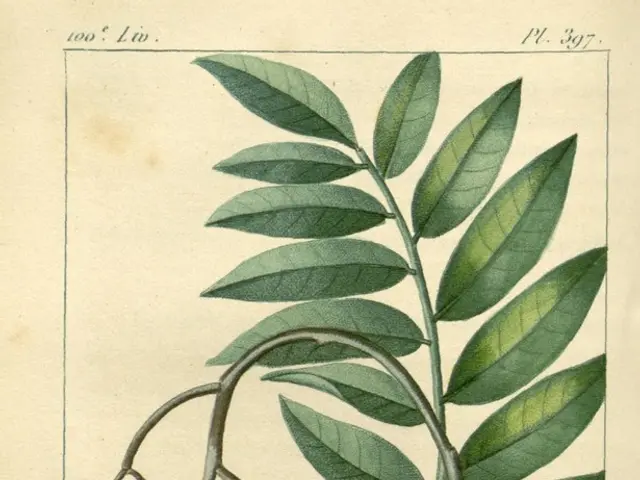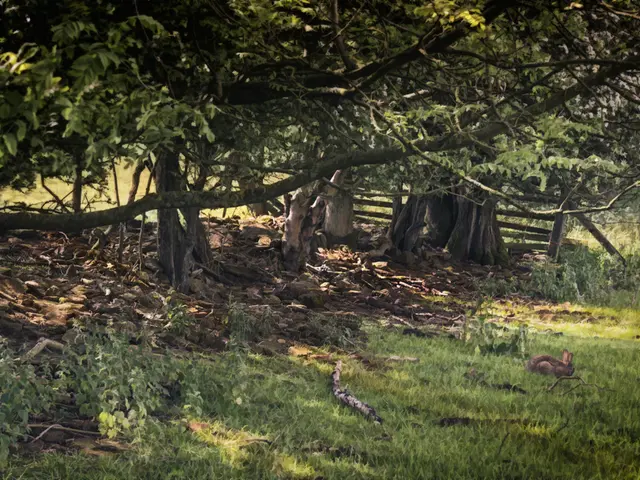"Guide for Nurturing Giant Onion Bulbs"
Growing onions, be it a challenge or a delight, is a staple for any garden enthusiast. Their compact size and long shelf-life make them a perfect candidate for your garden patch. Here's a break-down of my onion-growing journey, including what went well, what didn't, and tips to ensure a satisfying harvest for you.
Growing onions requires some patience and finesse. Nature plays a significant role in their growth, but understanding them better will help you better navigate the ups and downs. Knowing which onions to plant, how to plant them, and catering to their growth habits are crucial for optimizing the growth conditions.
When it comes to planting options, you have three choices to make – seeds, sets, or transplants.- Seeds. Planting seeds requires a good head start, ideally about three months before the last spring frost. Experienced gardeners might prefer this option, but it may be a bit challenging for beginners.- Sets. These "mini-onion" bulbs are not suitable for large bulbs. Instead, they grow into leafy green onion tops. If you've recently discovered that some gardeners can grow small onions from sets, they're known as long-day onions, commonly grown in the northern regions.- Transplants. Expert gardeners swear by these. These are the green onion-like bunches you find in your local nursery. These are my go-to option, and I highly recommend them for any beginner gardener looking to grown delicious onions.
PlantingWhen planting, space the bulbs around 6 inches apart in all directions, and bury about an inch into the ground, leaving the leafy part to protrude from the soil. Onion sets are exceptionally planted just below the soil surface.
You can plant in rows, use a square foot gardening method, or scatter them around existing plants. I usually experiment with a combination of all these methods! Raised beds seem to be the most favorable for onion growth, as heavy clay soil can pose a challenge.
Onions are cool-season crops that grow for an extended period, with their growth divided into two stages – leafy growth and bulb growth. The transition from leafy growth to bulb growth is triggered by day length.
Long-day onions form bulbs when daylight is 14-16 hours, while short-day onions require 10-12 hours of daylight. Intermediate-day onions require 13-15 hours of daylight for bulb growth. Understanding these day-length requirements will help you choose the appropriate onion variety for your specific location.
Environmental factors can sometimes interrupt proper bulb formation. Excessive temperatures and inconsistent heat can derail bulb growth, causing the onions to bolt instead. Onions prefer soil temperatures of around 55-75 degrees for leaf and bulb development. Temperatures above or below this range can cause bolting.
So, there you have it - a breakdown of my experiences and onion-growing tips. Remember, every garden and climate is unique, so don't be discouraged if you have to adapt and experiment to find the perfect onion-growing recipe for your garden. Happy growing!
Related Resources:
- The Best Onion Varieties for Short, Medium, Long, and Day-Neutral Days
- Growing Onions from Sets: A Comprehensive Guide
- Onion Temperature Requirements for Successful Growth
[Growing Onions from Transplants]
- To enhance your onion-growing journey, explore the extensive world of garden podcasts for insightful tips and conversations with fellow enthusiasts.
- To further facilitate your garden planning, discover a collection of garden printables designed for organizing your plot and tracking your onion growth.
- Once you've grown delicious onions, incorporate them into your lifestyle by preparing tasty home-and-garden recipes that showcase these staple veggies.







